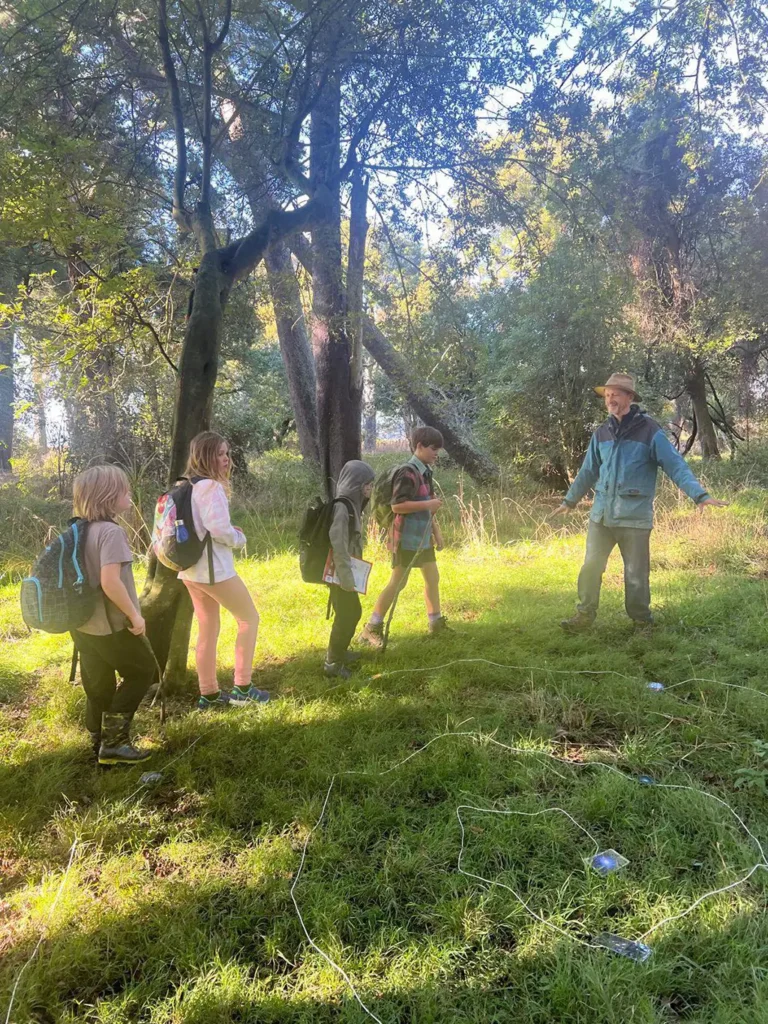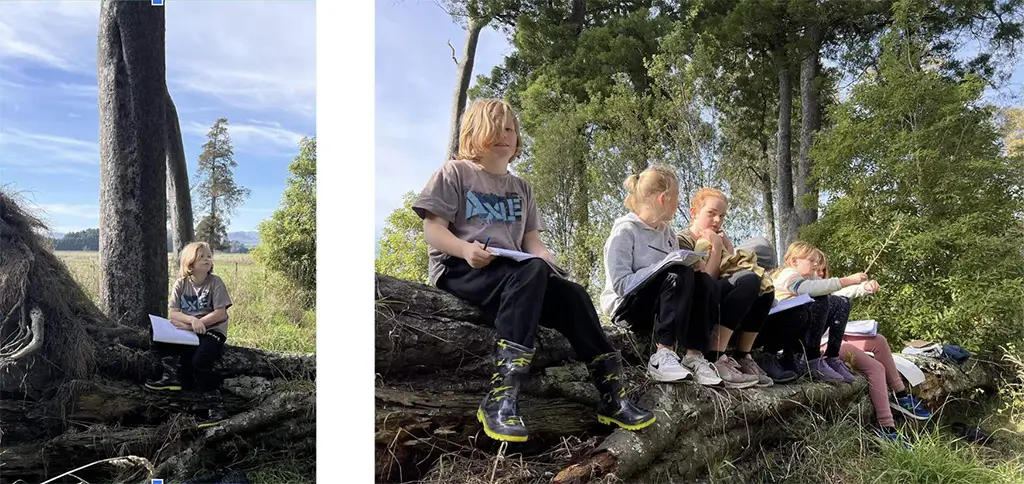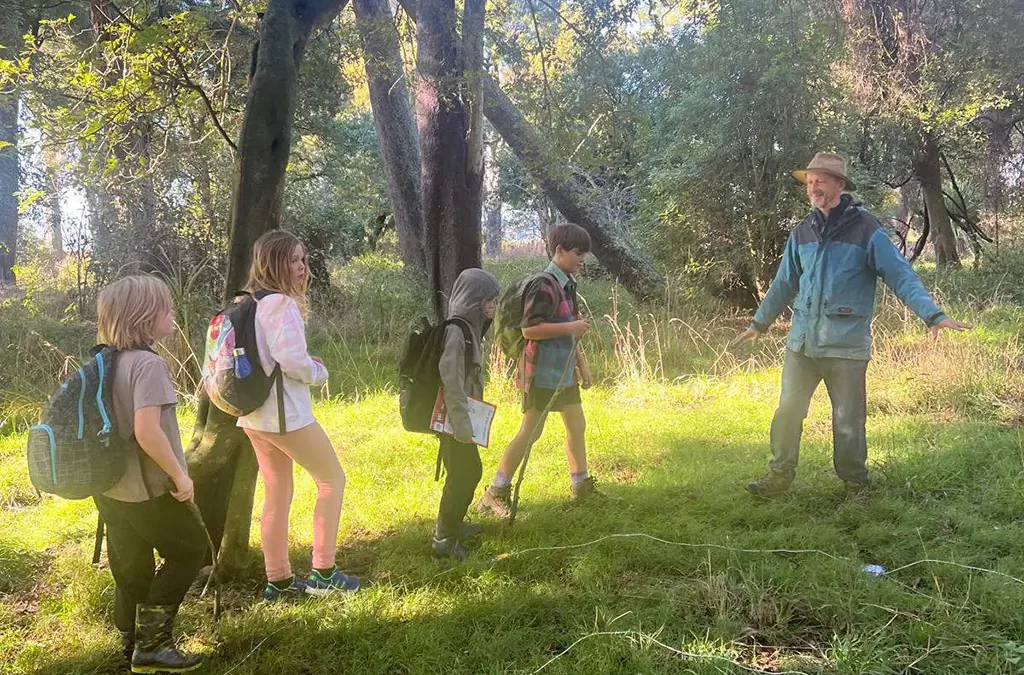The light was just reaching into the edge of the bush. I was laying out small squares of planting mat on the humps in the ground and large pieces of cardboard over a huge fallen trunk. Rod was not far away in a circular opening in the trees, laying down a string spiral, marked with threshold moments of how such a forest came to be. Nine thirty came around fast and two cars, filled with seven children from the Montessori part of Southend School, arrived at the main road entrance to the Smith’s farm just outside Martinborough. In convoy we snaked along the two kilometres or more of shingle track that leads to Waihinga bush; a QE11 protected remnant of podocarp forest.
Bursting out of the cars the children’s energy was infectious. A run to the river, time for kai and some of the Māori legend of the three baskets of knowledge shared on the river bank prepared the group for entering the forest. We paid particular attention to the second basket of knowledge, kete tuatea, which reminds us of knowledge gained through our senses. With that in mind we led the children on a slow, silent walk through the trees. We stopped to point out the big and the small …the dappled light, the hammered texture of the matai bark, the evocative sounds of a tui …

Arriving at the place of the deep time spiral we made a big circle and Rod recalled the threshold moments of our fourteen billion year history, that modern science has now revealed; stars and galaxies, simple cells who worked away for two billion years, before they managed to complexify enough for life to emerge. The gradual covering of the land with mosses and lichen and then the miracle of trees, with chlorophyll filled leaves that communicate with the sun and their vascular systems that held the majestic straight trunks which surrounded us. Just enough information to spark imaginations and hopefully not too much to fill all the spaces where new stories might grow. Each child had a chance to walk into the middle of the spiral … “that was surprisingly fun,” said Sadie, one of the children. I explained to her that sometimes it helps to experience things through the movement of our bodies.
Moving to another clearing in the trees we gathered a wordbank on the sheets of cardboard through brainstorming with the class the qualities of the bush and the things we might find there … insects, roots, mushrooms, leaves and branches … patience, courage, curiosity …once they got the hang of it, the words came thick and fast.
Then with books and pencils in hand, the children climbed onto the fallen log and some settled onto the mats in the long grass. Within minutes there was a tangible feeling of silence and focus in the atmosphere. On that occasion I had given a rather loose and non-specific prompt for the writing start line. I wondered if it was enough for the children to find their own way forward; ”you could write as one of the trees, or one of the creatures of the forest, or you might be the Universe trying to make the forest …” I needn’t have worried. The performing and planting plans for the rest of the morning were soon abandoned, as it was clear that the bush classroom setting was supporting the children to dive in deep. As the sun, now high in the sky, poured in through the leaves, none of the children needed our attention. I reflected on how in education and in so much of life, slowing and taking time are often neglected resources. So I was happy when Julie, their teacher, suggested giving the children more time and an opportunity to return to the bush again.

After twenty minutes or so, with no encouragement the children asked if they could present their writing. We appreciated how they had each chosen different perspectives to communicate what was important to them. Along with other ideas we heard about the seen and the unseen elements that made the forest, the beginnings of a song full of wonder and gratitude and the imagined journey of one of the seeds that grew into a mighty tree and all that took place beneath its branches.
Here is a small taste with more to come
